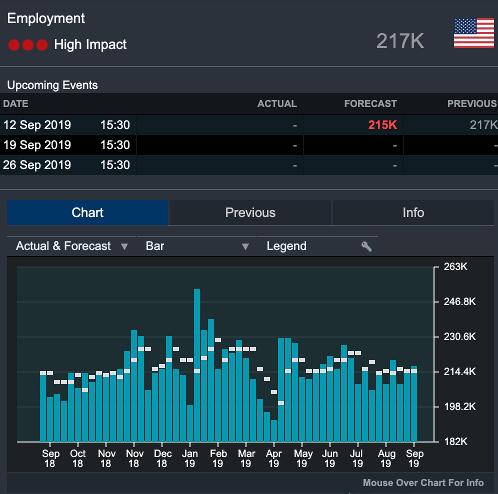Contents
When the economy is prosperous, these industries tend to expand and when the economy is in a downturn, these industries tend to shrink. In general, the stocks in these industries have a beta of greater than 1. A defensive super sector is a grouping of market sectors that include Health Care, Consumer Staples and Utilities. These are industries that are relatively immune to economic cycles. In general, the stocks in these industries have a beta of less than 1.
A sector fund would have an allocation of 100% to a specified sector. There’s more than one way to add specific sector exposure to your portfolio. For example, you could pick a sector and buy individual stocks that represent one or all of the industries it covers. Or you could invest in a sector mutual fund or exchange-traded fund, such as a utility fund or a tech fund. If you’re trying to determine the biggest market sector is, you could base it on the number of industries covered. In that scenario, it would seem that industrials would be the largest sector overall while energy and real estate would be the smallest since they only cover two industries apiece.

Examples of the utilities sector stocks include Consolidated Edison , Duke Energy , Exelon , NRG Energy and PG&E . Companies in the financials sector are businesses that provide financial services to commercial and retail customers. Examples of the financials sector stocks include Aflac , Berkshire Hathaway (BRK-A), JPMorgan Chase , Goldman Sachs and MetLife .
What is the sector breakdown of the S&P 500 Index?
The information provided by StockCharts.com, Inc. is not investment advice. Trading and investing in financial markets involves risk. Options carry a high level of risk and are not suitable for all investors.

It’s now used by the NASDAQ, NYSE and other international markets. Our experts have been helping you master your money for over four decades. We continually strive to provide consumers with the expert advice and tools needed to succeed throughout life’s financial journey. The S&P sectors, or Global Industry Classification Standard , organize companies based on their primary business activities. Volatility profiles based on trailing-three-year calculations of the standard deviation of service investment returns. Investing in the Best Healthcare Stocks Healthcare is a universal need.
Which Sectors Will Grow in the Next 10 Years?
The Global Industry Classification Standard is a system of identifying publicly traded companies according to their business operations. The GISC was developed by S&P Dow Jones Indices and Morgan Stanley Capital International in 1999. It now serves as the basis for many mutual funds and exchange-traded funds . The financials sector consists of companies involved in banking, including mortgage and consumer finance, as well as investment banks, brokerage firms and insurance companies.
That’s why we suggest keeping them at the forefront of your brain by looking at them every day. Also, included is our free candlesticks e-book and desktop wallpaper backgrounds. We suggest adding our wallpaper backgrounds to your computer so you can see these patterns everyday in your conscious and subconscious. Once you enter a symbol, a summary displays showing all sectors and the SIC Code in which the symbol is found. A snapshot quote and chart for the symbol are also displayed on the page. Sector Finder allows you to enter a ticker symbol and display the sectors in which it belongs.
Growth in the industrials sector also lagged in the three years leading up to mid-2022, compared to the S&P 500. This sector includes companies that make and sell equipment and provide commercial, professional, and transportation services. Some of the industries in this sector include aerospace, defense, construction, engineering, and infrastructure. This sector includes companies that take raw materials or natural resources and turn them into something more usable.
- Utilities sector stocks are usually steady, conservative performers with regional geographic reach.
- Our community is all about teaching and giving back and not pumping up our brokerage accounts off the backs of our members.
- You can check our sector Power Rankings here – where you can download the whole list of U.S. and international equity market ETFs in a spreadsheet to do your custom analysis.
- It tends to be a mature industry with modest growth potential.
This makes utility companies another good defensive investment. Many companies in the industrials sector produce capital goods, including defense, aerospace, construction, transportation and manufacturing. You might be familiar with companies like Delta, Deere or UPS.
What Are the 11 Sectors of the Stock Market?
These companies extract from the earth to produce energy, including alternative sources, such as solar and wind. It also includes companies that build energy equipment, provide energy services and are involved with any step of the production process. This could be oil field exploration, refining fossil fuels or marketing. A stock sectors list helps you find stocks that trade better in markets like a bear market.

Generally, that includes brokerage firms along with companies involved in banking, money markets, mortgages, investing, and insurance. Stocks in the financial sector may perform well when screeniert rates on loans rise. Lower loan demand, however, may weigh on earning potential. Between late 2020 and late 2021, this was one of the highest-performing sectors in the S&P 500 index.
The energy sector experiences volatility and performs well when oil prices are high. So although energy vastly underperformed the S&P 500 in 2020, the sector turned around and produced the highest returns since then. Here are the 11 stock market sectors, starting with the highest-growth stock sector from 2017 to 2022 and descending in order. The energy sector consists of all companies that play a part in the oil, gas, and consumable fuels business.
Many companies that sell these products even perform better in weak economies. But they also rely on construction and manufacturing equiti review demand from other sectors. Utility companies are usually well-established, keeping stable revenue even in recession.
The commonly-used system helps shape how ETFs and mutual funds are constructed. The consumer staples sector includes companies involved in food, beverage, and tobacco, as well as producers of household goods and personal products. Since these are goods and services that consumers need, regardless of their current financial condition, consumer staples is considered to be a defensive sector (i.e. recession-proof industries).
Demand for fossil fuels has fallen in recent years thanks to growing demand for renewables and the impact of the coronavirus pandemic. While renewable forms of electricity consumption are included in the Utilities sector, Energy encompasses all other forms of energy production — specifically, oil, natural gas, and coal. The sector doesn’t include producers of traditional fossil fuels, like oil and gas companies. Many Utilities companies are specialised according to geography and/or the type of utility provided (e.g. Duke Energy in the Southeast US, or Canadian Solar). Unlike Consumer Staples, the Consumer Discretionary sector experiences greater demand during periods of economic growth, when consumers have more disposable income. GDP and consumer confidence are two key indicators of consumers’ willingness to spend money on non-essential items, as opposed to saving.
Market Sector Classification List
Other utilities are responsible for delivering water to customers. Some utility companies engage in more than one of these different subspecialties. The financial sector includes some of the largest financial companies in the world like Visa pit bull lessons from wall street’s champion day trader , JPMorgan Chase , and Bank of America . Relative volume can be a game-changer for day traders tracking stock market momentum and volatility. The information technology sector is made up of companies that make our internet-driven world work.
An S&P 500 or total stock market index fund can help you add all 11 stock market sectors to your portfolio in a single investment. You don’t have to worry about guessing which industry will perform best. The real estate sector includes real estate services companies, real estate developers and equity REITs. This sector may offer strong growth opportunities, but shows steady growth overall. A stock market sector is a group of stocks that have a lot in common with each other, usually because they are in similar industries.
The 11 Stock Market Sectors (And Biggest Related ETFs)
“For practically any investor, I would advise the total US stock market fund as the only U.S. stock investment you need,” Campos said. Bankrate is compensated in exchange for featured placement of sponsored products and services, or your clicking on links posted on this website. This compensation may impact how, where and in what order products appear. Bankrate.com does not include all companies or all available products.
However, years of changes, such as mergers and new market demand, led to the decision to redefine the sector. Once formed by telecommunication companies (e.g., Sprint, Verizon), the sector now also consists of media and entertainment companies, such as Facebook and Netflix. With these companies, communication is possible across the globe. People aren’t going to go out and buy houses if they have to tighten their belts. In fact, perInvestopedia, more than 26,000 stocks worldwide have been classified by GICS, accounting for more than 95% of the world’s listed market capitalization.
There are 11 sectors, 24 industry groups, 69 industries, and 158 sub-industries. Investors can use a company’s classification to construct a diversified portfolio and to identify competitors of a company in the same industry. Cannabis companies are a new, but rapidly growing, part of the health care sector. Currently, the more well-known ones include Canopy Growth Corp. and Aurora Cannabis, with market caps of $23 billion and $12 billion, respectively. The utilities sector encompasses just about every different type of utility company you can think of.
Some of the largest companies in the healthcare sector are Johnson & Johnson, UnitedHealth Group, and Pfizer. The content on this website is for informational purposes only and does not constitute a comprehensive description of Titan’s investment advisory services. Here’s how GICS works and its 11 sector classifications, including some top companies in each.
